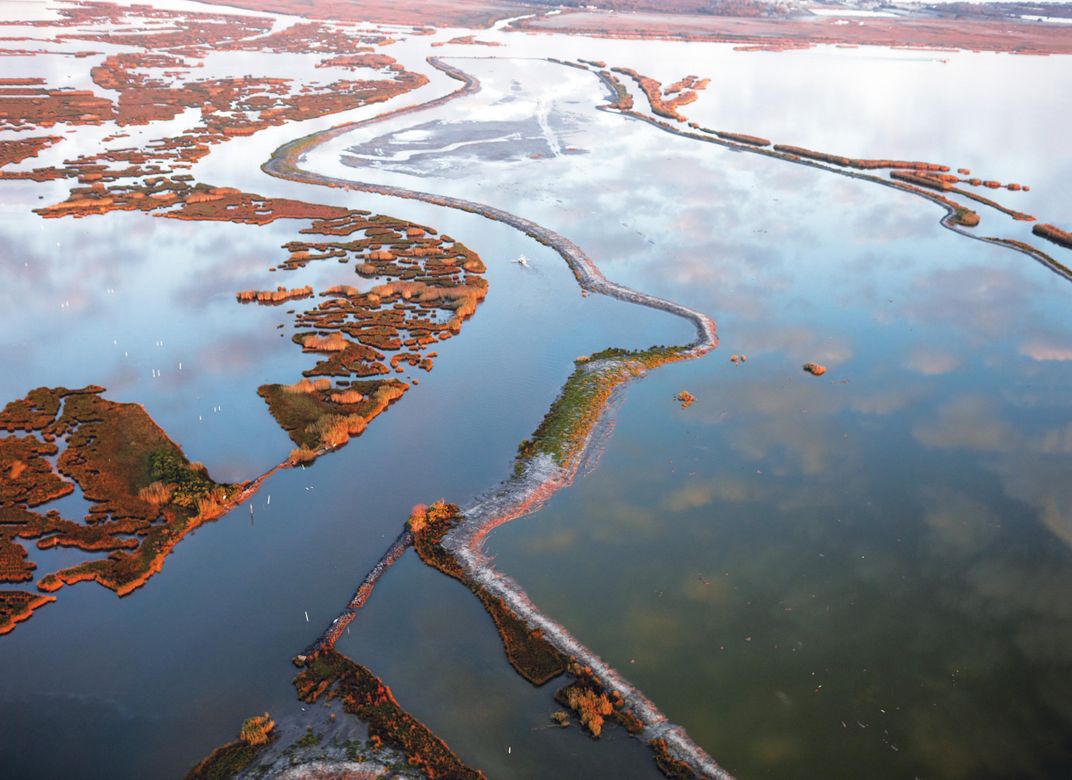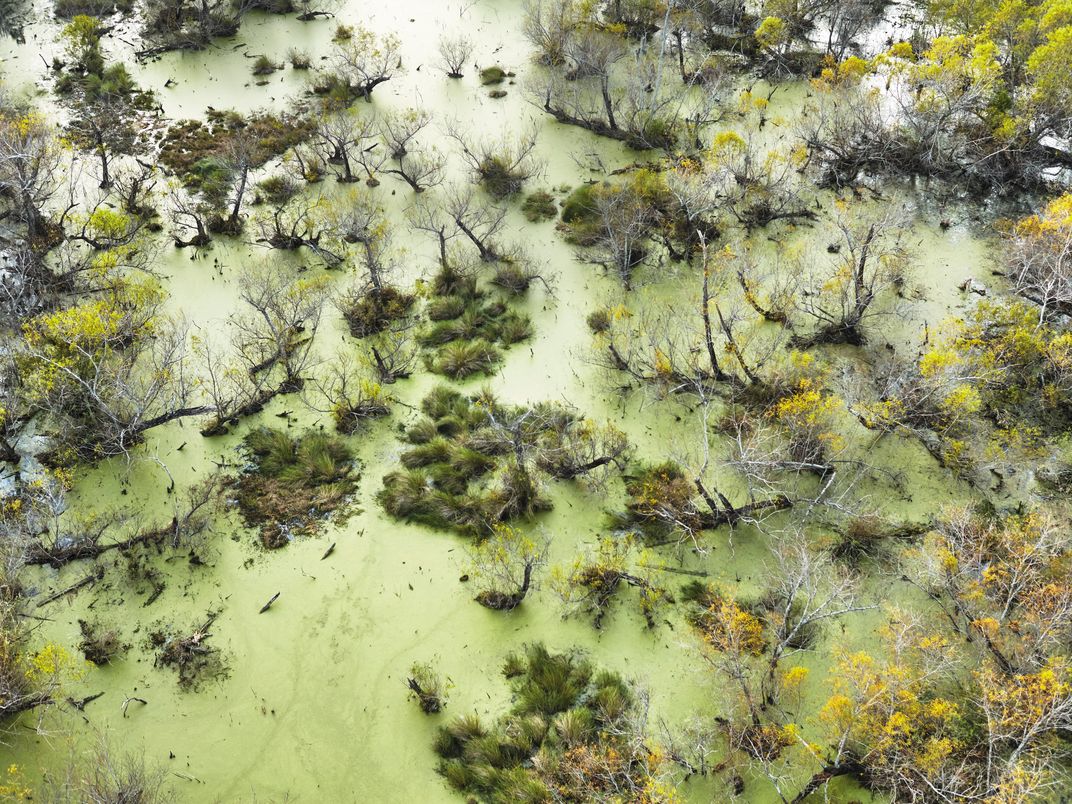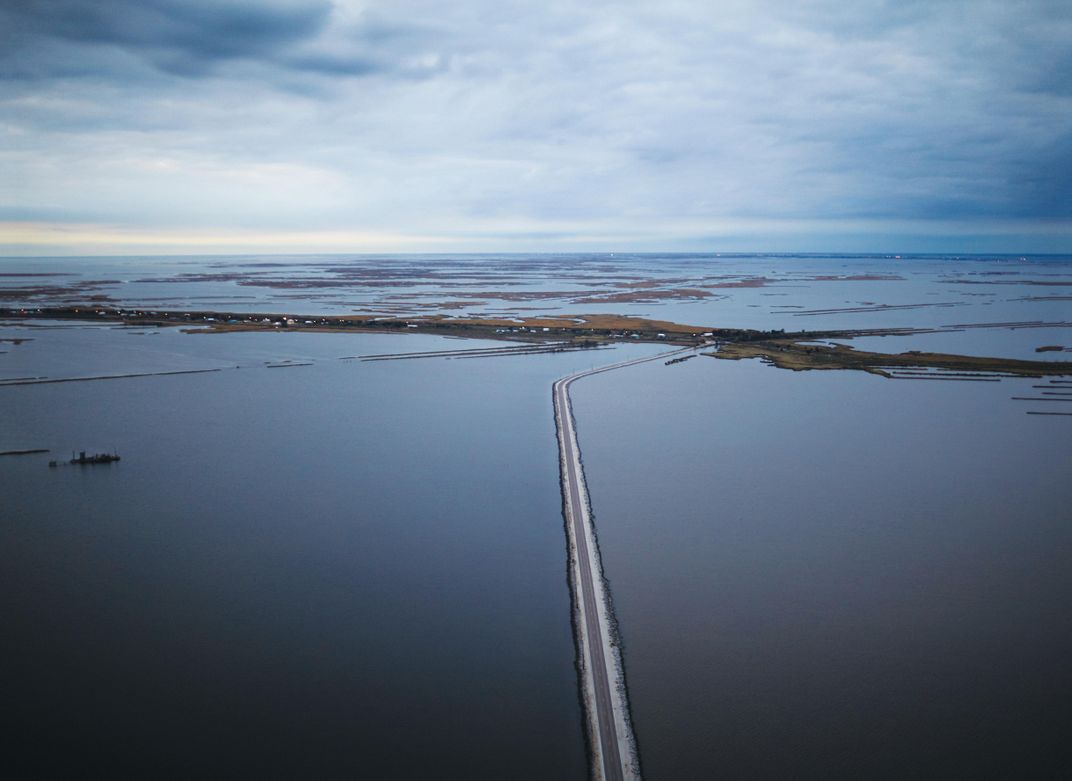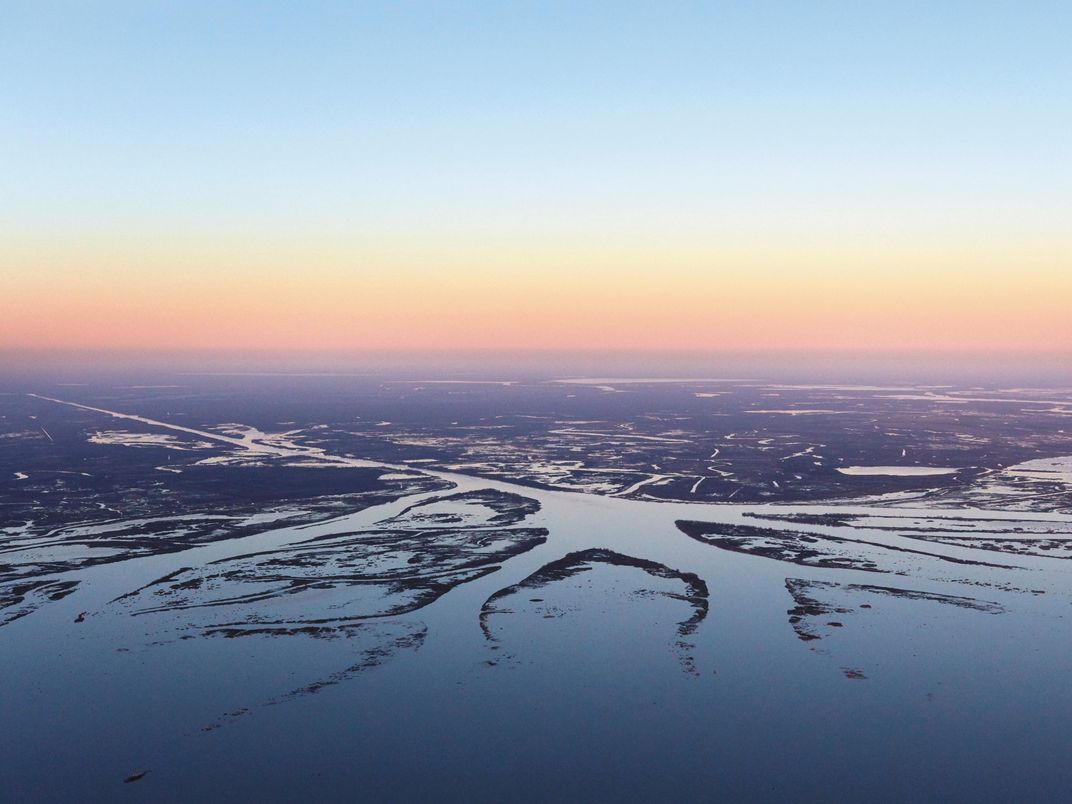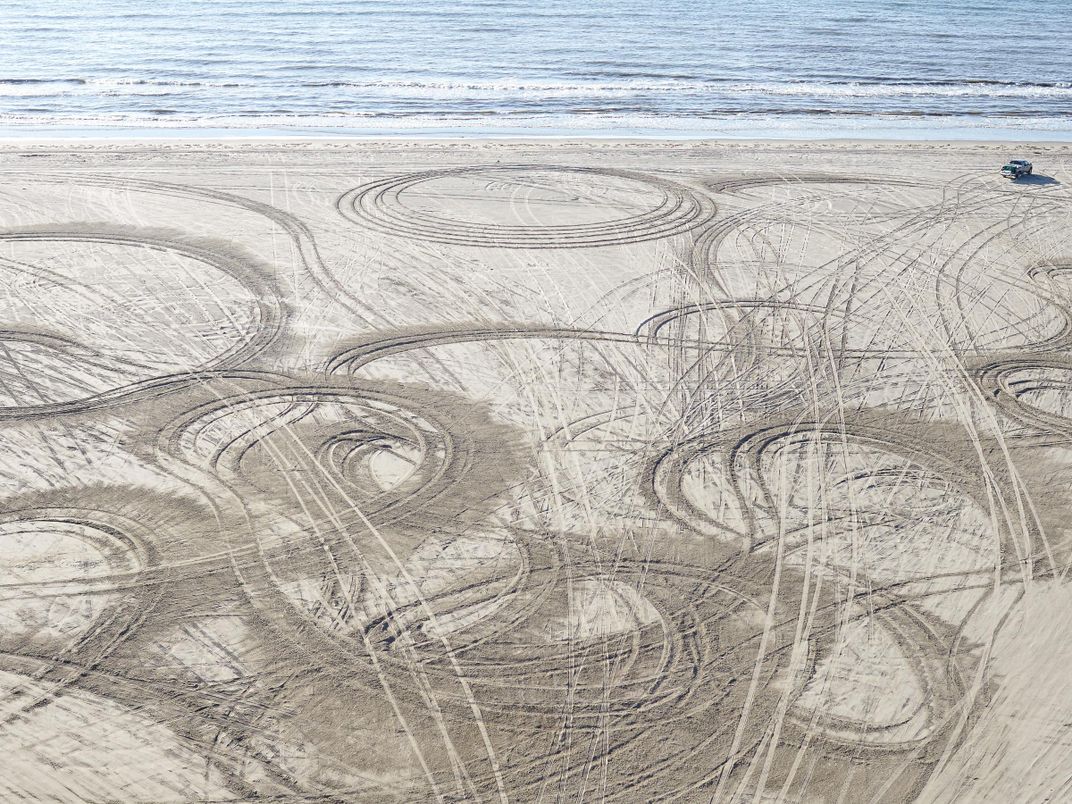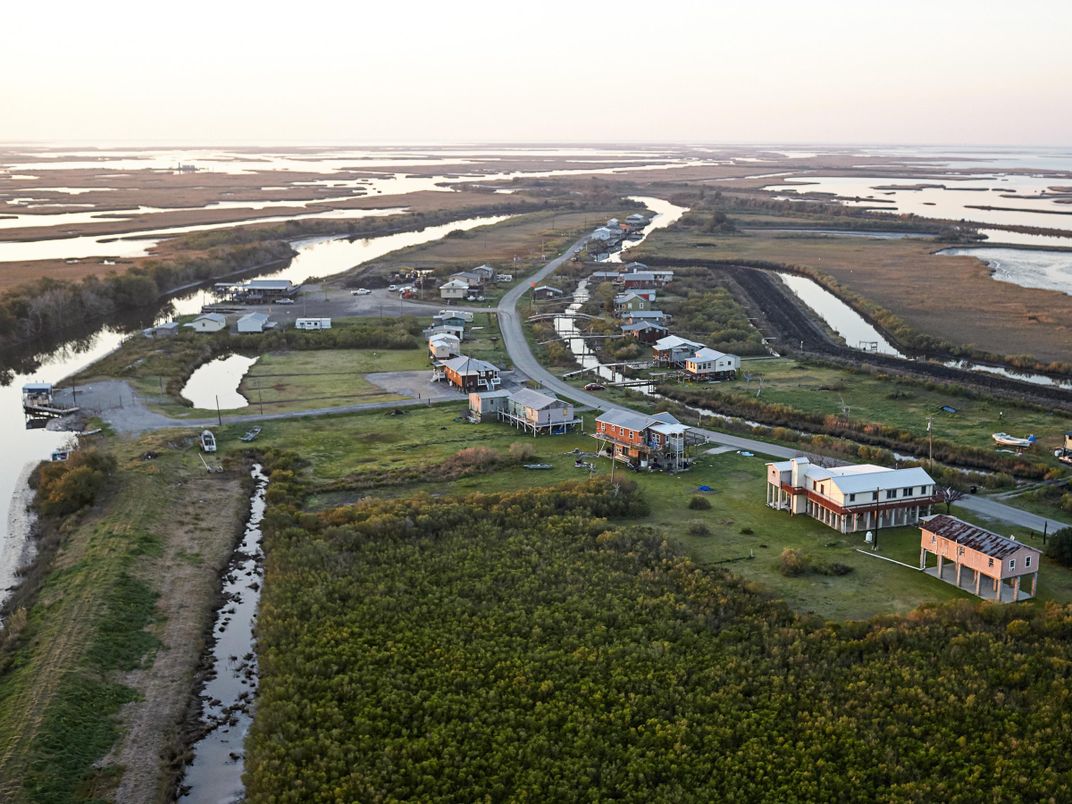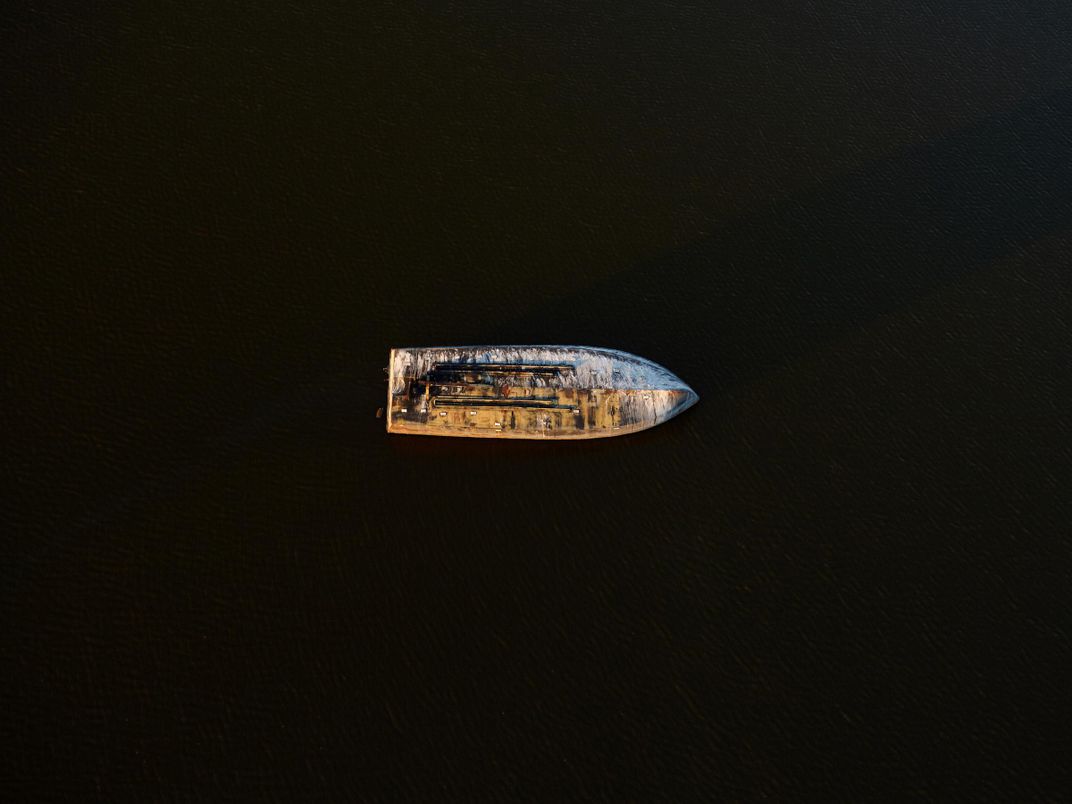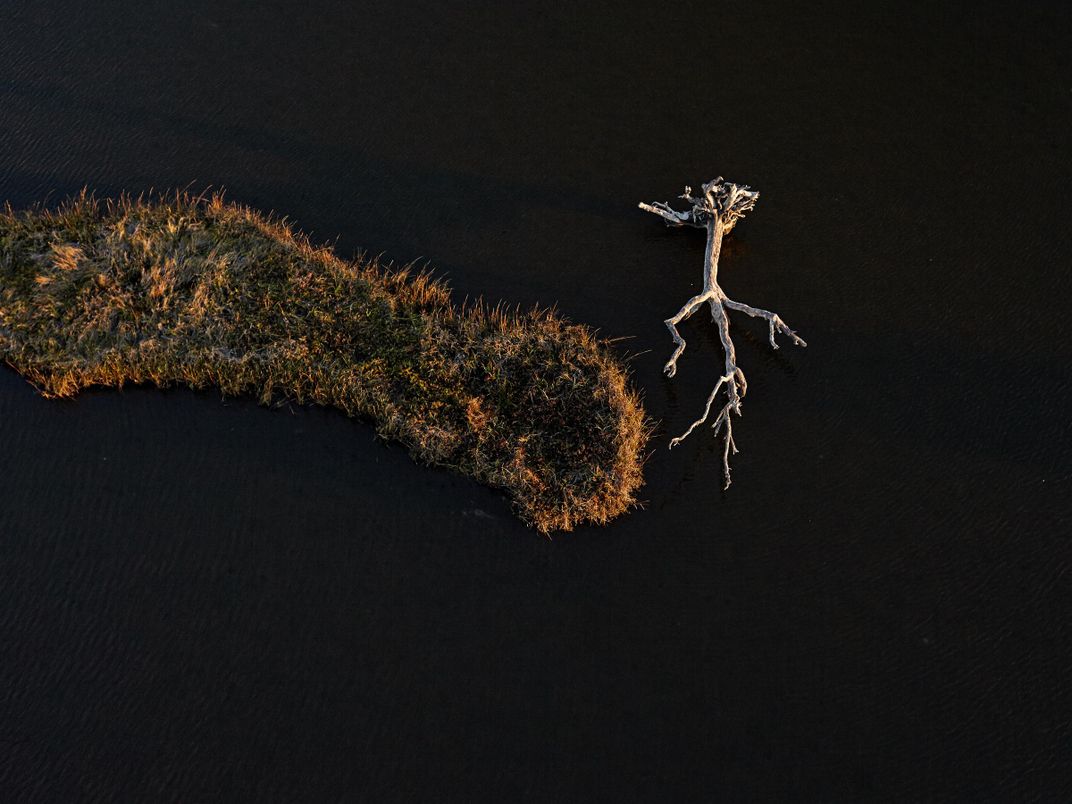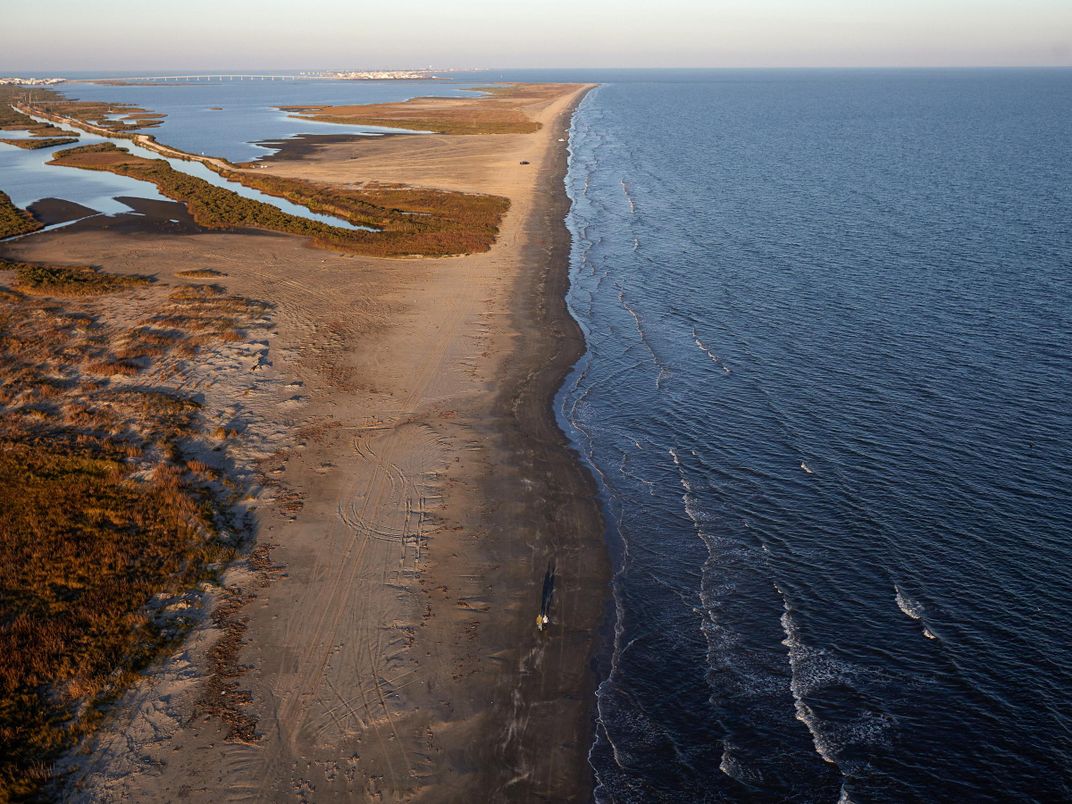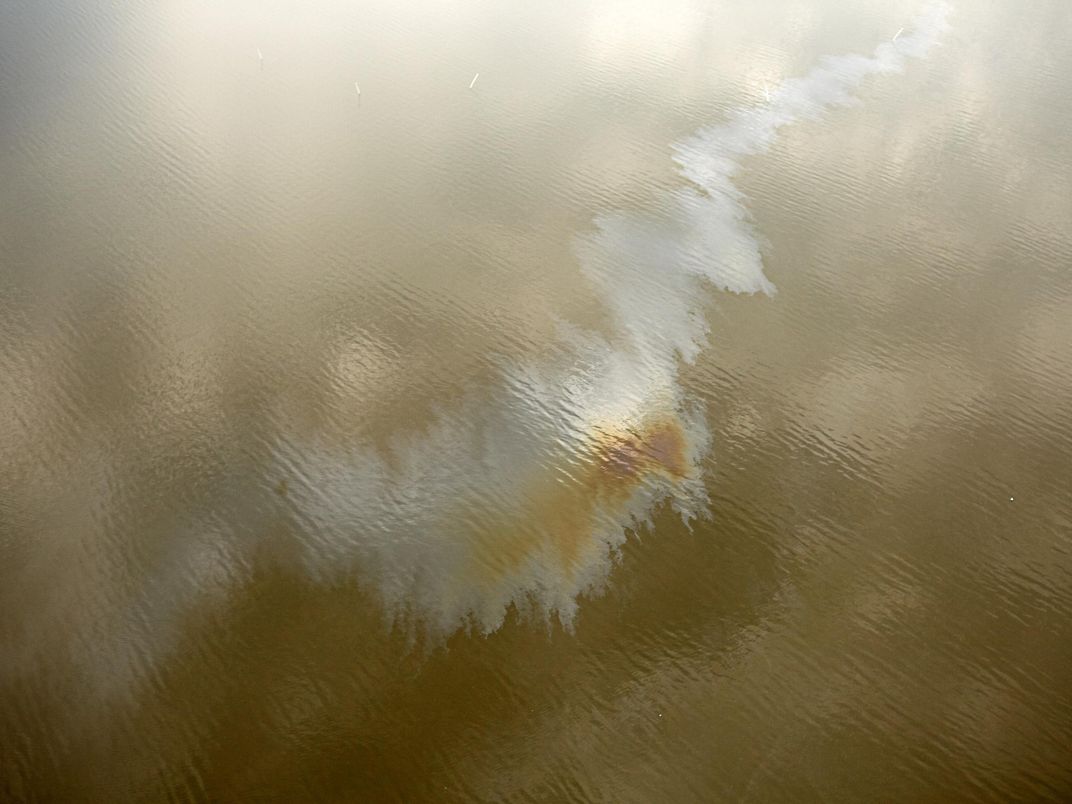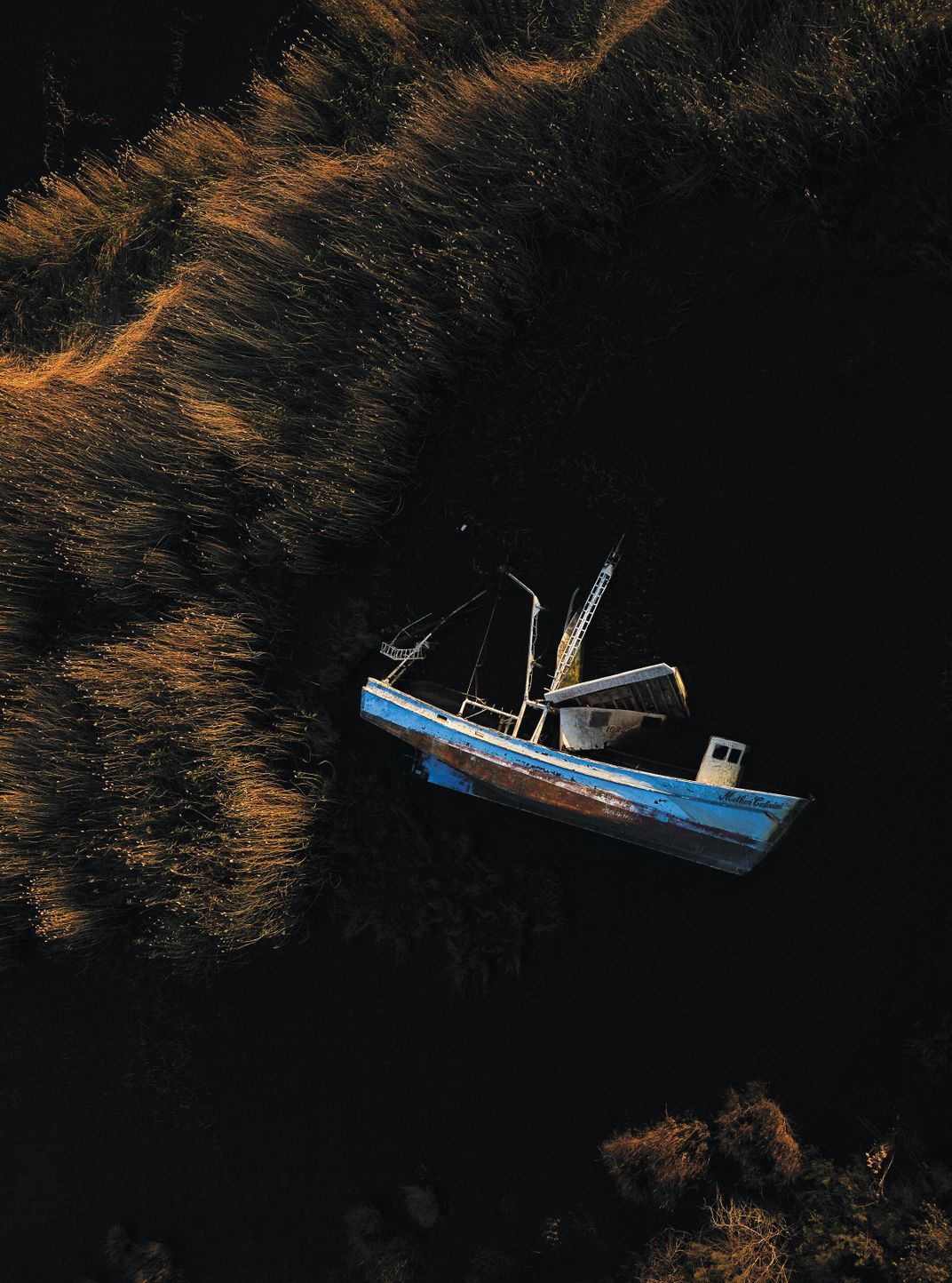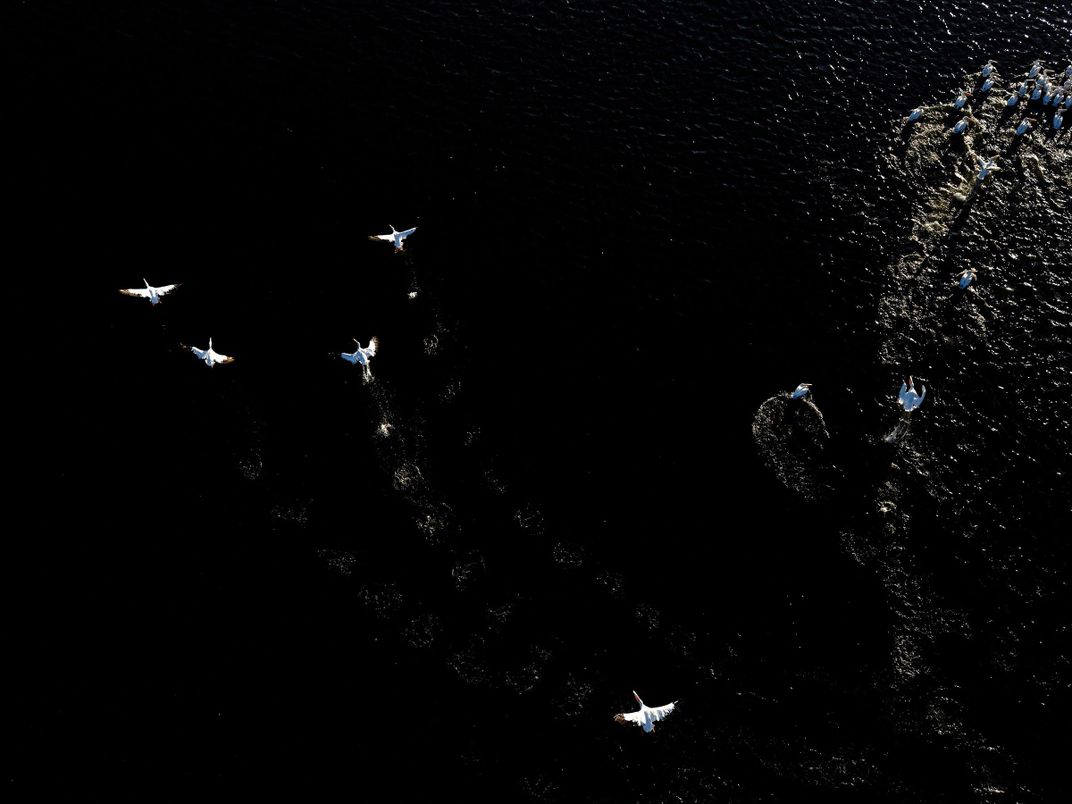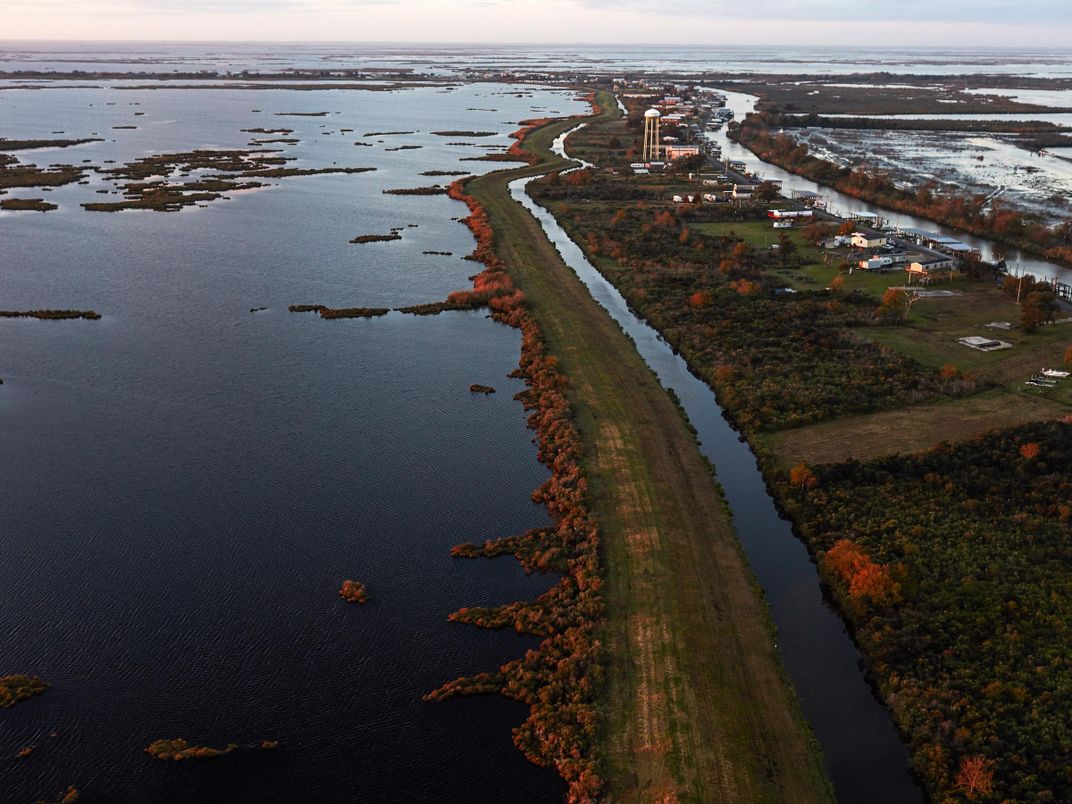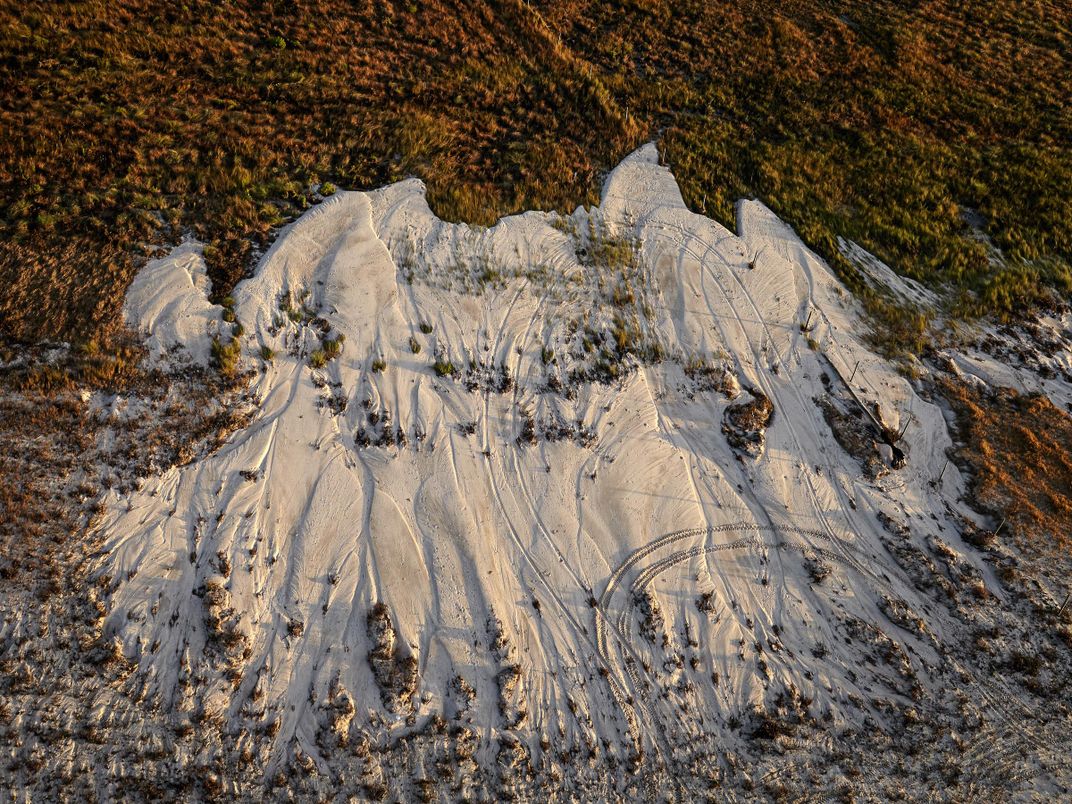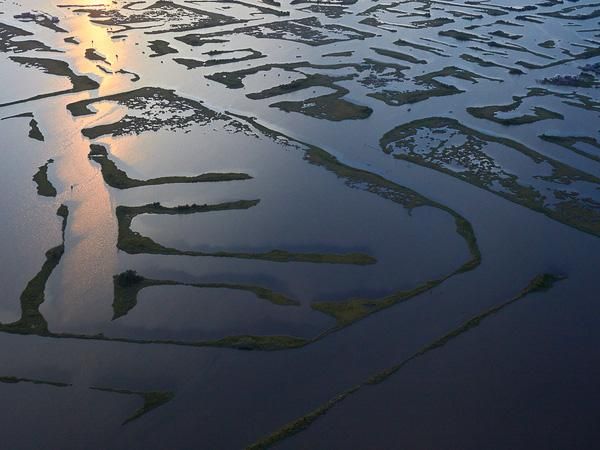The Residents of This Louisiana Island Are America’s First “Climate Refugees”
As the sea levels rise, these photos provide a big picture view of a place losing the battle against climate change
Isle de Jean Charles, in southern Louisiana, is linked to the mainland by a long, straight road. When I first set out across it, there was a strip of wetlands on either side. But as I continued, the water closed in, lapping at the edges of the asphalt.
The island is home to about 60 members of the Biloxi-Chitimacha-Choctaw Indian tribe. The land around them is rapidly disappearing. As I approached, I saw boats deteriorating in people’s yards, the nautical equivalent of rusting washing machines. The houses were all on stilts. Some were intact. Others were in ruins, their walls blown away, their stairs leading up to wooden frames open to the sky.
Louisiana is losing 75 square kilometers of coastal terrain every year, and the residents of this island have been called the first “climate refugees” in the United States. They’re unlikely to be the last. Other Gulf Coast states are also surrendering land to the water at a rapid rate. And up north, the 350 villagers of Newtok, Alaska, are hoping to move to higher ground. But Isle de Jean Charles is the first American community to be awarded federal funding—$48 million—to relocate en masse. There are tentative plans to move the tribe to northern Terrebonne Parish; the state of Louisiana and the U.S. Department of Housing and Urban Development are still negotiating the details.
Rising sea levels are partly to blame for the island’s disappearance; plus the process has been hastened by a century and a half of engineering the river with levees, which has deprived the delta of the very sediment that made it, and the many canals dredged by the oil industry, which let salt water into the marsh. This kills the plants at their roots, leaving the loose ground to erode into the bayou. Among the most striking sights I saw on the island were the denuded oaks reaching into the sky. Their bare branches stretched out in arabesques that evoked the human figure. They seemed especially alive in death, like something from Pompeii.
I approached a home belonging to Wenceslaus Billiot Sr., an 89-year-old former boat builder who has lived his whole life on the island. His house was intact, with a front porch and two rocking chairs. He greeted me in a voice heavily accented by his French dialect. The words were English, but the melody was something else entirely.
“Way back in the old days,” he told me, throwing his arm out toward the sea that lay just beyond the road, “you had trees. There was no bay. All this water used to be marsh.”
“The water, the marsh, having to move away—what do you make of it all?” I asked.
He told me he isn’t sure he wants to go. “I built this house in the 1960s,” he said. “I have another I built in ’49. I built it all.” But as we talked, the rain began to come down in sheets and he repeated a prediction he’d heard: By 2100, New Orleans itself will be underwater.
I had trouble grasping just how dramatically Billiot’s surroundings were disappearing until I saw these photographs by Ben Depp. When you are driving through the flat terrain of southern Louisiana, it’s hard to perceive the long stretches where water is encroaching. Some of the most vulnerable areas are also dense and swampy, which makes them hard to navigate on the ground. Depp realized that soon after he moved to New Orleans in 2013 after spending a few years in Port-au-Prince, Haiti. “Unless one is overhead,” he wrote to me, “it is impossible to truly situate oneself.”
Depp now photographs the coast from a 30-foot paraglider with a 19-horsepower engine that looks like it’s “part lawn mower, part vacuum.” A five-day course in Florida taught him to fly it in a way that, as he put it, “makes it most likely that you won’t hurt yourself.”
To take off, he runs with the motor strapped to his back while pulling strings on the wing so it fills with air. He can stay aloft for hours at a time. “It feels as though I am sitting in a patio chair suspended in the air,” he told me. He prefers to shoot just after dawn or before dusk. This helps him achieve the nearly surreal effect seen in some of these aerial images: The sun is low enough that the water is in shade, but what lies above it is touched by the light—tall grass, a boat on its side, a toppled oak tree.
Studying Depp’s pictures of the bayou, I saw them as a kind of war photography. These dreamy, surreal perspectives of a slowly submerging world are scenes of conflict. They exert a fascination from which we turn away, until we become personally engulfed in that reality. Most of us live on safe ground. But we live with the knowledge of an encroaching tide.
